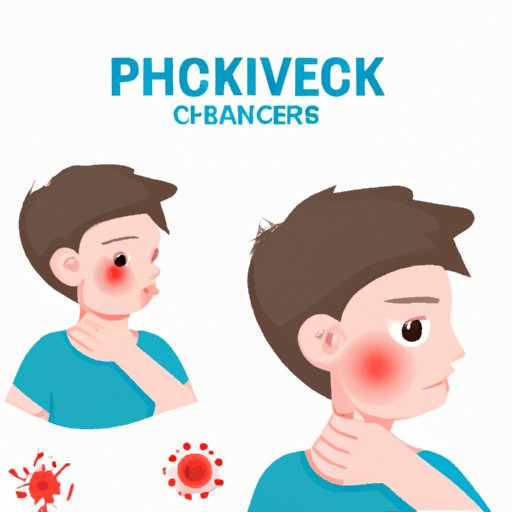
Introduction
Chickenpox, also known as varicella, is a highly contagious disease that commonly affects children. It typically causes a blister-like rash, itching, and fever. According to the Centers for Disease Control and Prevention (CDC), chickenpox is caused by the varicella-zoster virus (VZV). In this article, we will explore how chickenpox spreads, the biology of the virus, transmission stages, symptoms, and prevention methods. We will also provide personal accounts from individuals who have had the virus.
How Does Chickenpox Spread?
The most common ways that chickenpox spreads are through direct contact with an infected individual or through respiratory secretions (i.e. coughing or sneezing). This means that if someone comes into contact with fluid from chickenpox blisters, they can contract the virus. Close contact with a person who has chickenpox ups the chance of catching the virus.
The Biology of the Varicella-Zoster Virus
The varicella-zoster virus that causes chickenpox is part of the herpes family of viruses. VZV enters the body through the respiratory tract then travels to the liver and nerve tissue, where it can remain dormant for years. The virus is able to spread from one person to another through the air and contact with infected bodily secretions.
The Stages of Chickenpox Transmission
The virus is most infectious during the first few days after a person develops symptoms. The contagiousness of chickenpox starts from one to two days before the rash appears until all the blisters have scabbed over. It takes around 11 to 21 days for a person to display symptoms after being exposed to the virus.
Individuals can avoid contracting chickenpox during each stage by avoiding coming into contact with anyone who is infected with chickenpox or shingles, washing their hands frequently, avoiding sharing utensils or personal items, using and discarding tissues when sneezing or coughing, and in general, practicing good hygiene.
An Overview of Chickenpox Symptoms
The most common symptoms of chickenpox include a high fever, malaise, headache, and an itchy rash that starts as small red bumps and progresses to fluid-filled blisters before they crust over and eventually heal. The rash can appear anywhere on the body, even in places where clothing covers it. Other symptoms may include loss of appetite, tiredness, aches, and sore throat. It can take seven to 21 days for all symptoms to disappear.
Tips for Avoiding Chickenpox
The best prevention method is vaccination. The CDC recommends that all children get the immunization after their first birthday. Vaccination has significantly contributed to the reduction of chickenpox cases by 90% since the 1990s. Other ways to avoid chickenpox include avoiding close contact with anyone who has the virus, washing your hands often, not sharing personal items, and staying at home when sick.
Personal Accounts of Those Who Have Had Chickenpox
“I remember having chickenpox when I was nine years old. The blisters were incredibly itchy, and I couldn’t stop scratching them. I had a fever and felt generally unwell. Being a kid, I was so anxious to go back to school, but I had to stay home until I was completely better,” said Amanda.
Another affected individual, Michael, said, “I contracted chickenpox when I was in college. It was miserable, but thankfully I didn’t have any complications. I missed almost two weeks of classes, which was a struggle, but I was glad when it was over.”
Conclusion
Chickenpox is an easily transmitted viral illness that can cause severe complications, making it essential to familiarize yourself with how it spreads and the precautions you can take to prevent it. While it may be a challenging experience, it’s important to remember that it is generally not fatal for the majority of people who come down with the virus. By taking preventative measures, seeking medical help, and maintaining a positive attitude, you can overcome the challenges posed by chickenpox.





